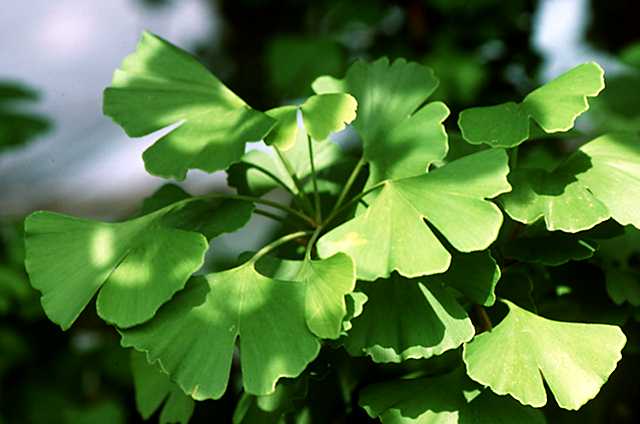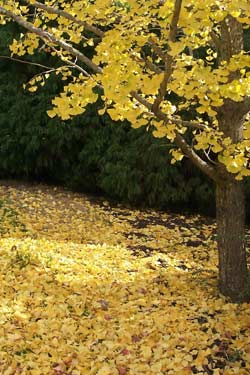
Ginkgo Spotto is a great game. Drive around the suburbs and you will see many of Melbourne’s Ginkgoes as their diagnostic features make for ready identification. The tree has a quite distinctive shape, one they share with their relatives, the conifers. Rather than wave in the wind, their leaves swivel back and forth, a result of the attachment of the leaf stem to the centre of the fan-shaped leaf.

I’ve been in love with Ginkgoes for years now, though to love the female hasn’t been easy. In about March or April of each year, the seeds develop, with a covering of orange-brown fleshy pulp that has the smell of a particularly aromatic vomit. I’ve yet to meet nursery staff that can sex a Ginkgo, so when you buy one, not only do you get the plant but you have a little flutter on the side, and you won’t know if you have lost for a few years. The Ginkgo in Melbourne’s Royal Botanic gardens is a female, so visit there in March and you’ll smell what I mean.
You will find Ginkgoes in all sorts of places, from the grounds of Coolart, the homestead on Westernport, the grounds of Genazzano College in Kew, a truly great Ginkgo in the Geelong Botanic Gardens to street trees in various suburbs. There are two fine trees outside Melbourne University’s Geology Building, while an Edwardian house in Brunswick Street, North Fitzroy, just near the Merri Creek Bridge, has trees front and back that appear to be bursting out of the house block.

They are particularly hardy plants, hence their use as street trees in Parkville. This was not part of their evolution, for they hail from the Triassic, some 240 million years ago and well before polluting car exhausts. Perhaps their hardiness results from having to cope with dinosaur breath, for it is very likely that those same fan-shaped leaves of the early Ginkgo species were on a dinosaur’s menu. While the fossil record of Gondwana showed Ginkgoes aplenty, they were thought to be extinct until Ginkgo biloba was discovered in the gardens of some Chinese monasteries. It is from there that seeds have been taken to grow and grace the suburbs of Melbourne, and give me such joy playing Ginkgo Spotto.